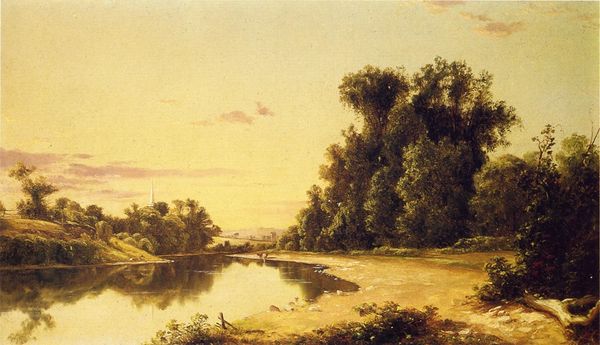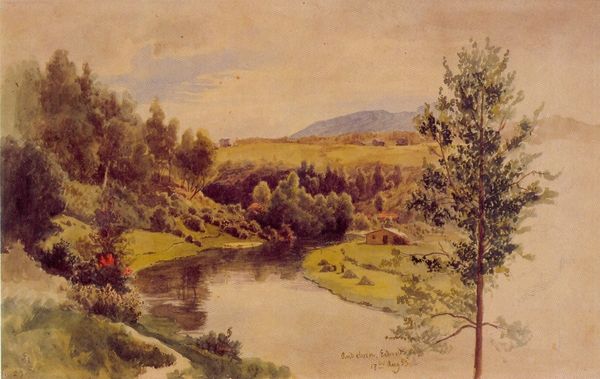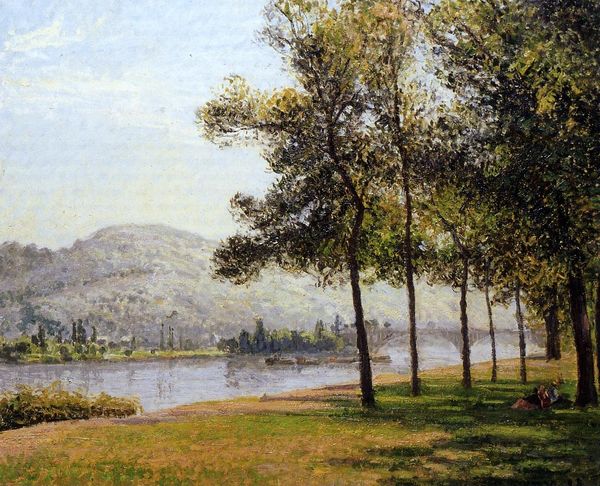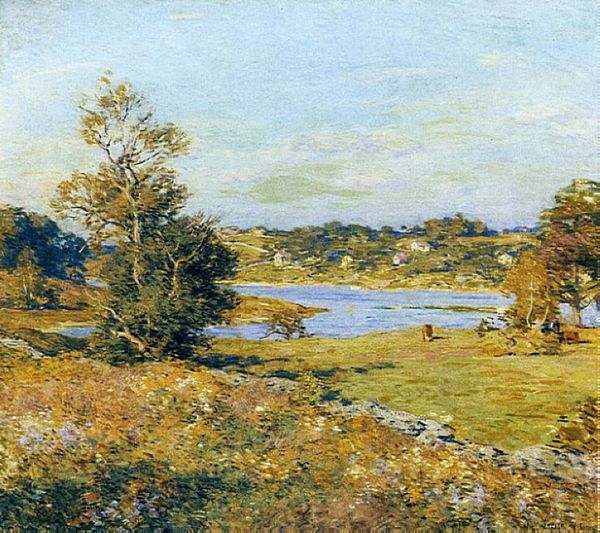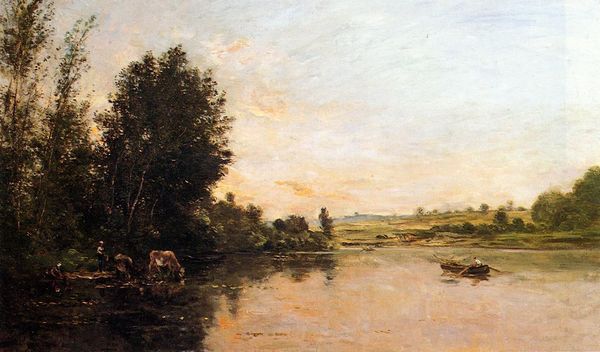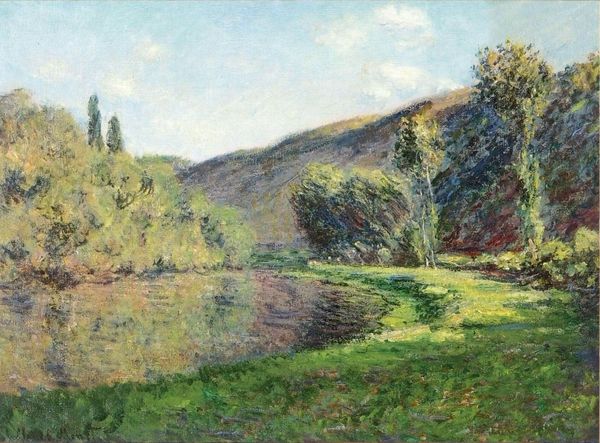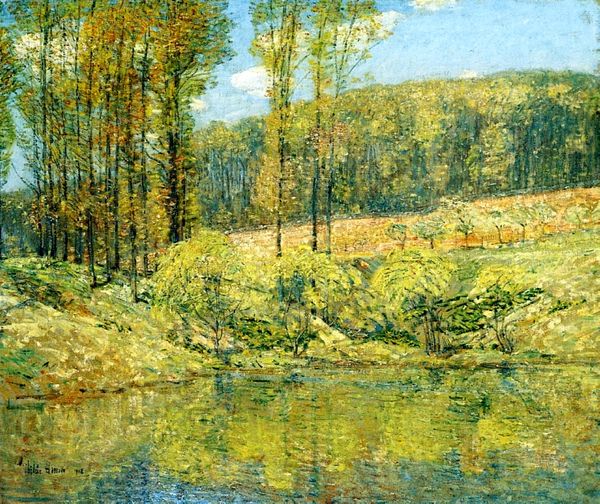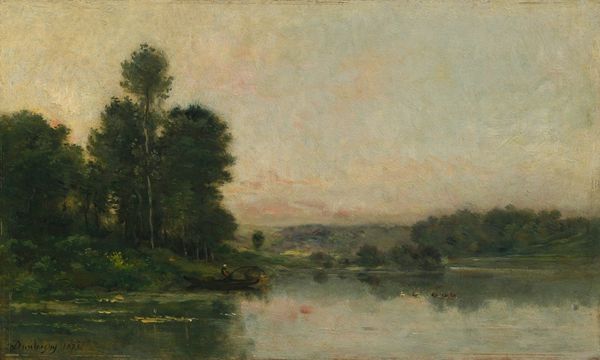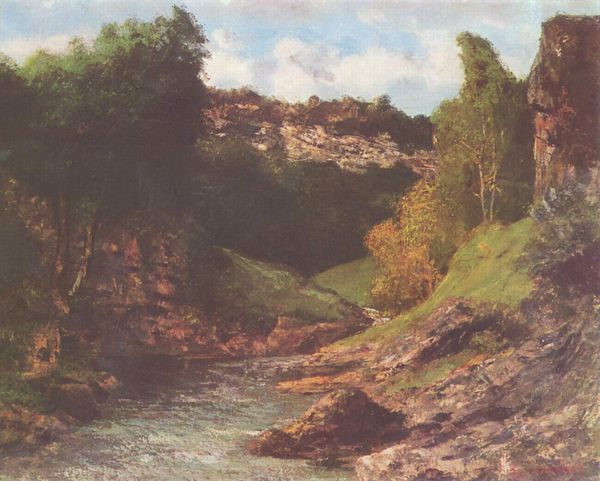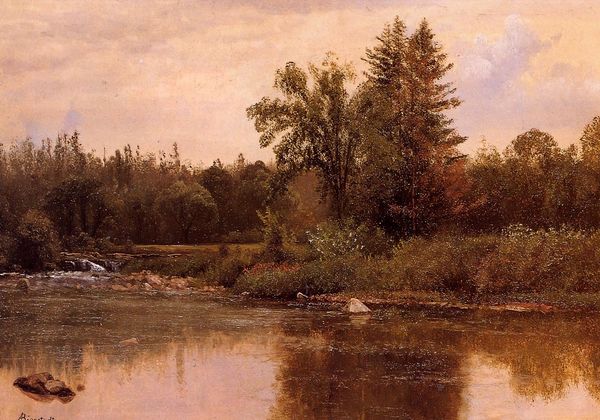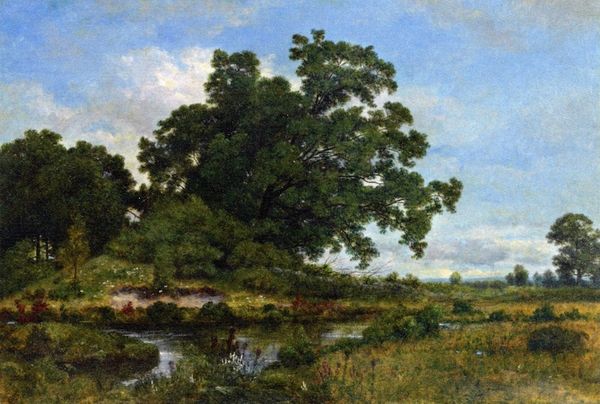
plein-air, oil-paint
#
sky
#
impressionism
#
plein-air
#
oil-paint
#
landscape
#
oil painting
#
water
Dimensions: 100.5 x 60.5 cm
Copyright: Public domain
Curator: Let's turn our attention to "The Seine at Port-Villez," an 1883 oil on canvas work by Claude Monet, currently held in a private collection. What are your initial thoughts? Editor: It feels...contained. Almost claustrophobic, even though it's a landscape. The hill looms large, and the reflections in the Seine dominate the foreground, almost suffocating the sky. I'm struck by the weight of the land versus the air. Curator: That's interesting. Given Monet's later obsession with capturing fleeting moments, here we see a rather earthbound rendering, doesn't it? Perhaps a sign of the social and economic realities shaping artistic production during the late 19th century, tied to land ownership and burgeoning industrial development influencing landscape representation. Editor: Precisely! The thick application of oil paint mimics the solidity of the land itself. The brushstrokes feel less about capturing light and more about constructing a physical terrain. We are looking at the product of someone very used to working in the open air. Think about the labour involved hauling an easel to this spot on a regular basis, prepping canvases. Curator: Yes, there's definitely a sense of groundedness. It also relates to the artistic establishment slowly starting to recognize and collect Impressionist art. Landscapes provided an easily accessible and consumable artistic language that helped introduce this group to a broader public. Editor: Right. And the location itself - Port-Villez, outside of Paris but accessible. Monet could still be linked to urban centers but explore the material reality of a specific landscape. Are there records on how that landscape has been altered since the date of the work? Was that land useful to industry? This type of painting invites the industrial gaze, because he painted something that looks like material to extract, from trees to aggregate and maybe stone. Curator: An intriguing direction. Seeing beyond the pure "aesthetic" allows us to understand how painting engages the socio-economic context from which both painting and painter are sustained. It makes us wonder: to whom does this landscape truly "belong?" Editor: Indeed. The painting may romanticize a scene but ultimately is the end product of labour on-site. What about Monet himself? I suspect the production processes surrounding the labour were important factors in the outcome of the artwork itself. It does makes me wonder about those paint tubes... were they machine-made yet, or...? Curator: Fascinating insights; these layers of history and process offer such a nuanced appreciation for the art. Editor: Absolutely! Seeing the process and the social context brings everything into sharper focus.
Comments
No comments
Be the first to comment and join the conversation on the ultimate creative platform.
